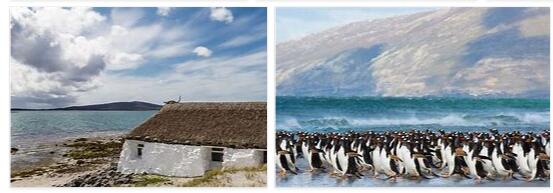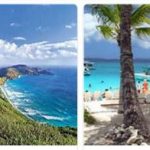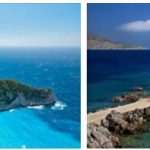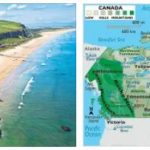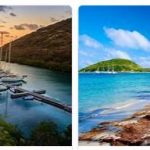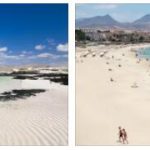The Falkland Islands, which politically belong to Great Britain, are located in the southern Atlantic. The islands became known to many people in 1982 when Argentina claimed the islands by military force, thus provoking the Falklands War, which was ultimately won by Great Britain. In the meantime, the situation around the islands has calmed down and visitors can safely travel to the archipelago.
Particularly worth seeing is the animal world, which is unique in the world due to the cool climate and the isolated location of the islands. Especially the penguin colonies and the majestic albatrosses attract visitors. The capital Stanley, with a population of 2,000, is the cultural and economic center of the Falkland Islands. Here the Port Stanley Church, the world’s southernmost Anglican church, is worth seeing.
According to listofusnewspapers.com, the Falkland, as it is also known, has 278 different species of flowers and plants. The weather conditions play a key role in the fact that a wide variety of plants can develop here. The sub-Antarctic conditions allow a certain variety, but the plants are not very large. So you find yourself in a kind of bonsai landscape. The trees reach a maximum height of 1 meter. One example is the dwarf birch. Most of the time you will find grasses and wide areas of grass here. The sedge and panicle grasses stand in rows next to the different types of clover. The clover is often used as animal feed.
It is worth noting that only one terrestrial mammal species managed to evolve in the Falkland Islands without humans. The Falkland Fox, in fact, was the only mammal in the Falkland Islands. Unfortunately, the last Falkland fox was exterminated as early as the 19th century. The bird world could spread much better here. Today 63 native bird species live on the islands. The best known are albatrosses, ducks and falconry pipits.
Falkland Islands – key data
Area: 12,173 km²
Population: 3,140 (July 2008, CIA). Mostly descendants of British immigrants.
Population density: 0.26 residents per km²
Population growth: 0.011% per year (2009, CIA)
Capital: Port Stanley (2.270 residents, 2006)
Highest point: Mount Usborne, 705 m
Lowest point: Atlantic Ocean, 0 m.
Form of government: The Falkland Islands have been a British overseas territory since 1837. The constitution dates from 1985, the last constitutional amendment was made in 1998. Parliament consists of a legislative council with 10 members. The Falkland Islands are claimed by Argentina.
Prime Minister: Chief Executive Keith Padgett, since February 1, 2012
Head of State: British Queen Elizabeth II, represented since October 16, 2010 by Governor Nigel Haywood
Language: The official language in the Falkland Islands is English.
Religion: Anglicans, Catholics, United Free Church, Evangelist Church, Jehovah’s Witnesses, Lutherans, Seventh-Day Adventist
Local time: CET – 7 h.
In the Falkland Islands, summer time applies from the first Sunday in September to the first Sunday after April 15th: CET – 6:00 am.
The time difference to Central Europe is -8 h in summer and -6 h in winter (except the last Sunday in March to the first Sunday after April 15 and from the first Sunday in September to the last Sunday in October: -7 h).
International phone code: +500
Internet ID:.fk
Mains voltage: 240 V, 50 Hz
Falkland Islands – Geography
The Falkland Islands are located about 650 km off the southeastern coast of South America. The archipelago is made up of two main islands, each about 6,000 square kilometers in size (West Falkland and East Falkland) and around 200 small islands (only five of them are larger than 10 square kilometers).
Here is an accurate topographical map of the Falkland Islands.
On both main islands the north is criss-crossed by ranges of hills in an east-west direction. With 712 the highest peak in East Falkland is reached (Mount Usborne, in Spanish Cerro Alberdi).
The second highest mountain in the Falkland Islands is located on West Falkland: Mount Adam (in Spanish, Monte Independencia).
The south of both main islands is flat.
West and East Falklands are separated by the wide Falklandsund. The eastern island is divided again by a fjord near Darwin. The capital Stanley is on the eastern coast of East Falkland.
The landscape of the Falkland Islands was shaped by several Ice Age glaciations. The glaciers of that time created a glacial erosion landscape with fjords, round humps and lakes as typical features. Due to the cold and humid climate, bogs formed in numerous island regions after the Ice Age.
Falkland Islands – Climate and the best time to travel
The climate in the Falkland Islands is cold, rainy and windy. The average annual temperature is only 5 ° C. Only in the southern midsummer from December to February are almost 20 ° C rarely reached. Usually the temperature is between 8 and 12 ° C from October to April. When the sun is shining, the radiation is intense; bring good sun protection and a hat.
In the southern winter from May to September, with heavy cloud cover, there is usually permafrost during the day as well. During these months the temperature rarely rises above 3 ° C.
The weather is changeable all year round with usually low to moderate precipitation, which is spread over the whole year (200 days with precipitation).
Best time to travel to the Falkland Islands: Migratory birds and marine mammals come to the beaches and peninsulas of the Falkland Islands between October and March. December and January are the best months for observing animals, and the longer sunshine makes other outdoor activities easier. However, December and January are also the wettest months. The peak of the tourist season is from October to April, which does not mean much when the number of visitors is relatively low.
Sports events such as horse racing, bull riding and herding dog competitions take place every year. The sea trout season runs from September to April, with the best time being from late February.
